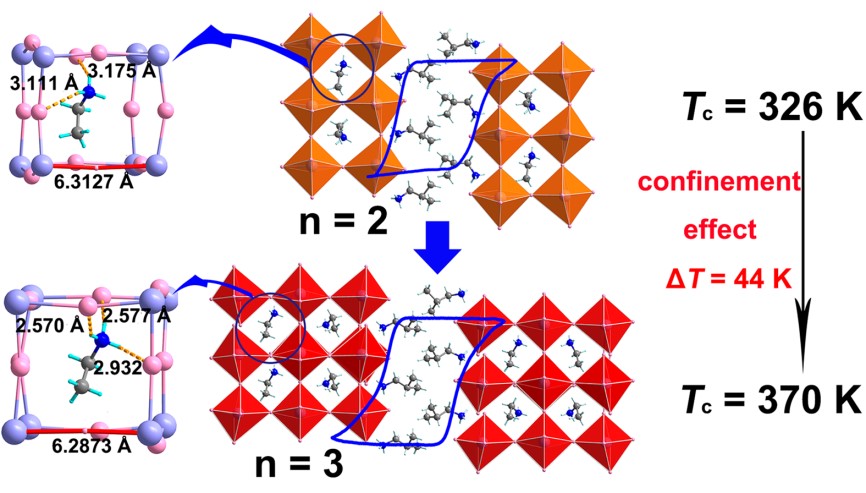
Two-dimensional (2D) organic inorganic hybrid perovskite (OIHP) ferroelectrics have attracted much attention due to the combination of spontaneous polarization and excellent semiconducting properties. Nevertheless, how to effectively tune the Curie temperature (Tc) remains an obstacle to their further development.
Confinement effect, which has shown great success in the molecular dynamics control of guest molecular in some metal-organic frameworks, provides new insights into the Tc-tuning of OIHP ferroelectrics.
In a study published in Angew.Chem.Int.Ed., a research group led by Prof. LUO Junhua from the Fujian Institute of Research on the Structure of Matter (FJIRSM) of the Chinese Academy of Sciences obtained a bilayered and a trilayered 2D OIHP ferroelectrics through incorporating large-size ethylammonium (EA) as cage-confined rotators.
The researchers found that the trilayered compound exhibited a Tc up to 370 K, about 44 K higher than that of bilayered compound (326 K).
Structural and computational analyses suggested that the improvement of Tc was due to the higher phase transition energy barrier, arising from the increased cage-confinement effect with increased lead bromide layer thickness.
This study suggests that EA is an effective "cage-confined rotator" to rationally design 2D OIHP ferroelectrics, and provides a way to effectively tune the Tc of 2D OIHP ferroelectrics.
In light of "cage-confined rotator" strategy, one can expect more 2D OIHP ferroelectrics with promising performance.

Schematic illustration of the strategy (Image by Prof. LUO Junhua's group)

86-10-68597521 (day)
86-10-68597289 (night)

52 Sanlihe Rd., Xicheng District,
Beijing, China (100864)

